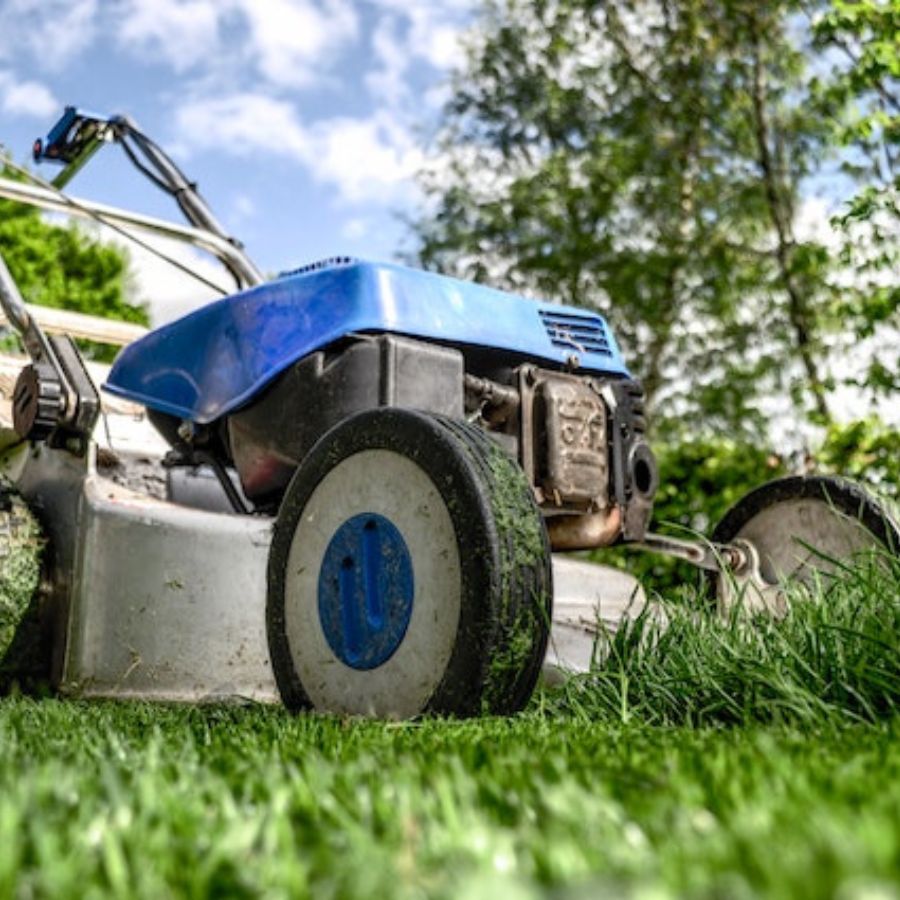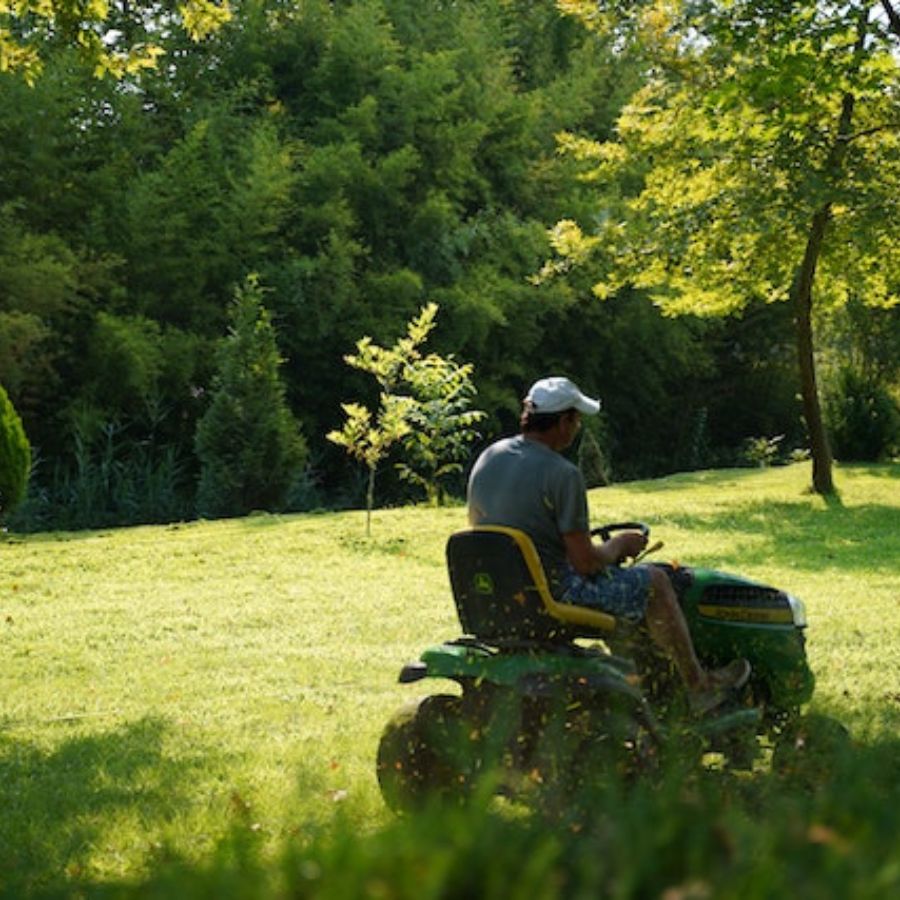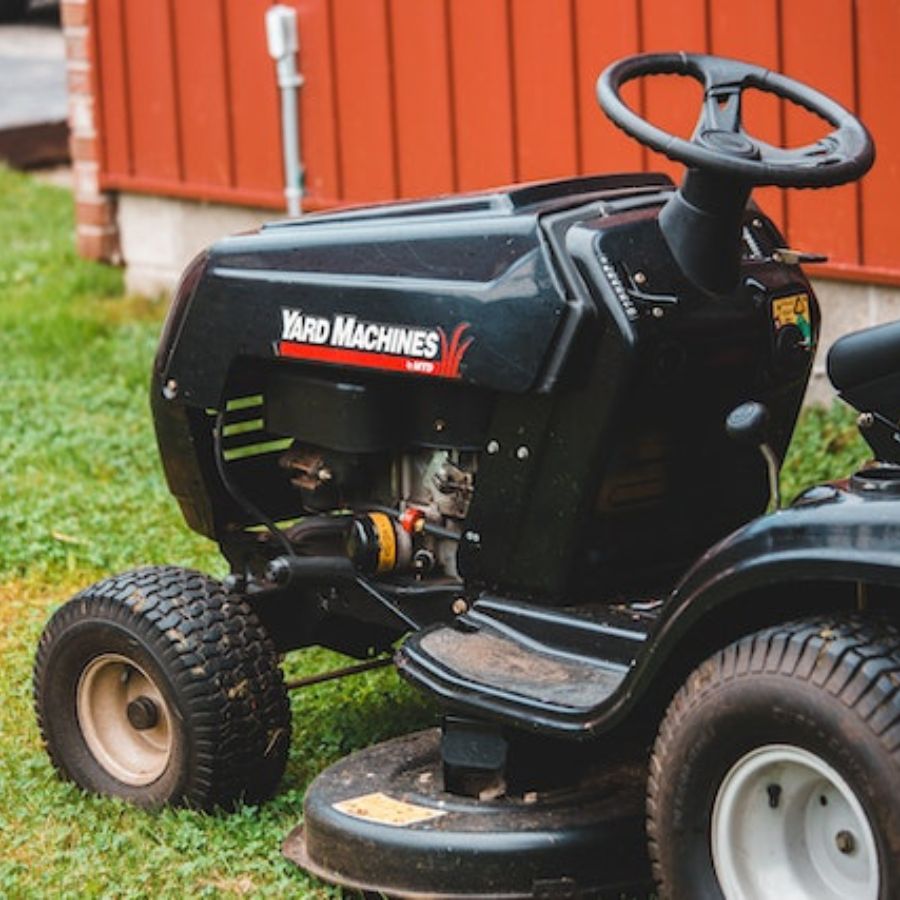A riding lawn mower is a valuable investment for homeowners with large lawns. However, protecting this expensive equipment from the elements is crucial to maintaining its longevity and performance. One of the best ways to safeguard your riding lawn mower is by storing it in a shed. But what size shed do you need? When choosing a shed for a riding lawn mower, consider reviewing the various applications of storage sheds to ensure you make the right decision.
This article will explore the factors to consider when determining the ideal shed size for your riding lawn mower shed. In addition, it ensures you make an informed decision and provides adequate protection for your valuable machinery.
Assessing the Dimensions of Your Riding Lawn Mower Sheds

When considering the size of a riding lawn mower shed, the first step is to measure your equipment accurately. As you determine the shed size for your riding lawn mower, consider the extra room and benefits you could gain from outdoor storage sheds. Also, consider your mower’s length, width, and height, including any attachments like baggers or trailers.
It’s important to measure from the furthest point to ensure accuracy. Additionally, consider any potential upgrades or replacements you may make in the future, as they could impact the dimensions. Thoroughly assessing the dimensions of your riding lawn mower will provide a solid foundation for determining the shed size that can comfortably accommodate your equipment.
Investing in riding mower sheds, such as durable metal sheds, is an excellent choice for protecting your lawn mower and other garden tools. Alongside your mower, you can also store push mowers or other equipment in the shed. You can ensure sufficient space for all your storage needs by taking accurate measurements. Consider incorporating a durable shed ramp with your equipment for easy access to the shed. With careful consideration of the dimensions, you can choose a shed that provides secure and organized storage for your riding lawn mower and other essential gardening tools.
Creating Adequate Clearance Space
When choosing a shed for your riding lawn mower and other lawn equipment, it’s crucial to consider the necessary clearance space. Allocate enough room on the shed floor to comfortably enter and exit while operating the mower. Ensure sufficient space for turning the mower around without any obstructions. Aim for at least a foot or two of clearance on all sides of the mower. This clearance allows you to move while storing and retrieving the equipment. Whether you opt for a metal shed or a dedicated riding mower shed, taking clearance space into account ensures that your shed is practical and user-friendly for the smooth operation of your lawnmowers and other lawn equipment.
Considering Additional Storage Needs
When selecting a lawn mower shed, it’s essential to think beyond just storing your riding mower. Consider any additional equipment or items you’d like to keep in the shed, such as gardening tools, fuel cans, or spare parts. Considering these storage needs, you can determine whether a more oversized storage shed or extra compartments are necessary. Striking a balance between accommodating your riding mower and providing ample space for other items ensures a clutter-free and organized storage solution. Whether it’s a dedicated riding mower shed or a multi-purpose storage shed, planning for additional storage needs ensures efficient utilization of space.
Shed Door Size and Accessibility
When choosing a lawn mower shed, it’s essential to consider the size of the shed’s door for easy accessibility. Please measure the width and height of your mower and ensure that the shed’s door can comfortably accommodate it. While a standard single door is suitable for most cases, consider opting for a double door or more expansive entryway if you have a larger mower or plan to upgrade. Moreover, this ensures convenient entry and exit, reducing the risk of accidental damage. Whether you have a push mower or a larger riding mower, selecting a shed with the appropriate door size guarantees smooth accessibility and a hassle-free storage shed.
Understanding Local Building Regulations and Space Constraints
Before investing in lawnmowers, one must be familiar with local building regulations and homeowners’ association guidelines regarding shed size and placement. Take the time to research and understand any restrictions or requirements in your area. Additionally, evaluate the space in your yard where you intend to install the shed. Consider the shed’s footprint and ensure it fits comfortably within your property, leaving sufficient space around it. By adhering to local regulations and optimizing your available space, you can choose a shed that meets your needs and complies with governing rules. Following these guidelines ensures a hassle-free and compliant installation, whether a storage shed or a shed for your push mower or riding lawn mower.
Future Upgrades and Storage Flexibility
While considering the current size of your lawn mower shed is essential, it’s wise to plan for future upgrades or replacements. If you anticipate getting a larger mower or acquiring additional equipment, opt for a shed that offers extra space. Investing in a slightly larger lawn mower shed provides flexibility, eliminating purchasing a new shed for upgraded equipment. Future-proofing your shed ensures it remains suitable for evolving needs. Whether it’s accommodating a push mower or a larger riding mower, choosing a shed with storage flexibility allows you to adapt and make the most of your storage space.
Climate and Weather Considerations
The climate and weather conditions in your area should influence your choice of shed size. If you live in an area with harsh winters or frequent storms, you may need a more oversized shed to accommodate additional protective measures such as covers or shelters. Moreover, you might require more space in the shed if you plan to store other items susceptible to weather damage, such as gardening supplies or fertilizer. Consider your region’s climate and weather patterns to ensure your shed adequately safeguard your riding lawn mower and other stored items.
Budget and Cost Factors

While selecting the right-sized shed for your riding lawn mower is crucial, you should also consider your budget. Larger sheds tend to be more expensive than smaller ones. Evaluate your financial constraints and weigh the cost of various shed sizes against the benefits they offer. Remember that the shed’s quality and durability are equally important factors. Opting for a well-built, sturdy shed within your budget will ensure the long-term protection of your riding lawn mower while providing value for your investment.
Conclusion
A shed for your riding lawn mower could help you create extra storage space in your home. Choosing the right size shed for your riding lawn mower is essential for safeguarding your valuable equipment from the elements. Ireland’s Department of Agriculture has resources on agricultural machinery that can complement your understanding of what size shed to use for your riding lawn mower. By assessing the dimensions of your mower, creating adequate clearance space, considering additional storage needs, evaluating shed door size, understanding local regulations and space constraints, considering future upgrades, accounting for climate and weather conditions, and balancing your budget, you can make an informed decision. With the right-sized shed, you’ll know your riding lawn mower is secure and protected for years.





Leave a Reply